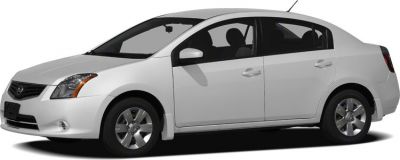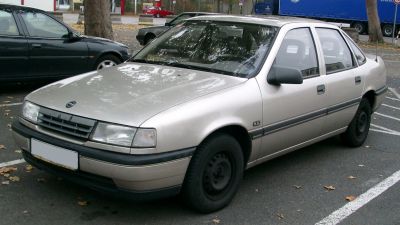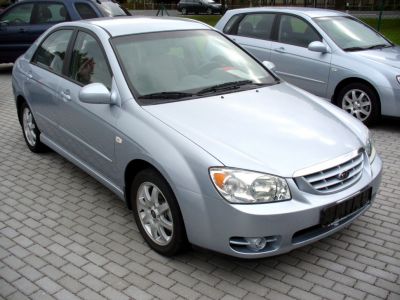 2004 Mazda 3 I Sedan (BK) Dimensions, Size & Specs
2004 Mazda 3 I Sedan (BK) Dimensions, Size & SpecsMeasurements of the 2004 Mazda 3 I Sedan, engineered for optimal performance and comfort
| Dimensions | |
|---|---|
| Length: | 4490 mm176.8 in14.7 ft |
| Width: | 1755 mm69.1 in5.8 ft |
| Height: | 1465 mm57.7 in4.8 ft |
| Trunk Capacity: | 413 liter14.6 cu ft |
| Trunk Capacity (Max): | 675 liter23.8 cu ft |
| Weight Specifications | |
| Curb Weight: | 1165-1260 kg2568-2778 lbs |
| Maximal permitted Weight: | 1675-1770 kg3693-3902 lbs |
| Tire Specifications | |
| Rims Sizes: | 15-inch rims:
|
| Tire Sizes: |
|
The Mazda 3 Sedan (BK), produced from 2003 to 2009 and representing the first generation of the Mazda 3's sedan variant, is a compact vehicle designed for both practicality and driving enjoyment. Measuring 4490 mm (176.8 inches) in length, 1755 mm (69.1 inches) in width, and standing at 1465 mm (57.7 inches) tall, the Mazda 3 Sedan (BK) presents balanced proportions that suit urban and suburban driving environments while offering a stable road presence.
With a curb weight ranging between 1165 and 1260 kg (2567 to 2778 lbs), this sedan maintains a lightweight profile that contributes to responsive handling and fuel efficiency. The maximum permissible weight varies between 1675 and 1770 kg (3693 to 3902 lbs), accommodating passengers and cargo while maintaining safe performance limits.
One notable feature of the Mazda 3 Sedan (BK) is its luggage capacity, with a standard trunk space of 413 liters (14.6 cubic feet). This expands to 675 liters (23.8 cubic feet) when the rear seats are folded, enhancing its versatility for carrying larger items. This makes the sedan practical for daily commuting, weekend trips, and light cargo transport.
The wheel and tire options include rims sized at 15, 6J x 15, and 6J x 16 inches, paired with tire measurements of 195/65 R15 and 205/50 R16. These variations support different driving styles and road conditions, optimizing comfort and grip.
Overall, the Mazda 3 Sedan (BK) is a well-rounded compact sedan from the mid-2000s that blends efficient dimensions, a lightweight frame, and practical luggage space, making it a competitive choice for drivers seeking functionality and style in a compact package.
Discover the standout features that make the 2004 Mazda 3 I Sedan a leader in its class
Have a question? Please check our knowledgebase first.
The Mazda 3 I Sedan (BK) features a length of 4490 mm (176.8 inches), a width of 1755 mm (69.1 inches), and a height of 1465 mm (57.7 inches). These dimensions position it well within the compact sedan category, offering a balance between interior space and manageability on the road. The moderate width contributes to comfortable cabin space while still allowing ease of maneuverability in urban environments. Its height provides a relatively low profile for sporty styling and better aerodynamics.
The curb weight of the Mazda 3 I Sedan (BK) ranges from 1165 to 1260 kilograms (2568 to 2778 pounds), depending on trim and equipment level. This relatively light weight contributes positively to the car's agility, fuel efficiency, and overall driving dynamics. A lighter vehicle means the engine has less mass to move, enhancing acceleration and handling responsiveness. Additionally, the lighter curb weight helps improve braking performance and reduces tire wear, making it a practical choice for drivers who enjoy a spirited driving experience without compromising economy.
The Mazda 3 I Sedan (BK) provides a luggage capacity of 413 liters (14.6 cubic feet) with the rear seats in their upright position. When the rear seats are folded down, the luggage space expands significantly to 675 liters (23.8 cubic feet), offering much more versatility for transporting larger or bulkier items. This expanded capacity allows for easy accommodation of luggage during trips, purchase of large items, or flexibility in daily use when extra cargo space is needed. The design balances passenger comfort and cargo needs effectively.
The Mazda 3 I Sedan (BK) typically comes equipped with rim sizes of 15,6J or 16 inches, depending on the specific trim and market. Corresponding tire sizes include 195/65 R15 and 205/50 R16. These tire dimensions provide a good balance between ride comfort and handling performance. The standard 195/65 R15 tires offer a more comfortable and economical ride, while the 205/50 R16 tires enhance road grip and cornering ability, lending a sportier feel. Both tire sizes contribute to the car’s overall stable and predictable driving dynamics.
Yes, the Mazda 3 I Sedan (BK) comfortably fits into a standard residential garage. With its exterior dimensions measuring 4490 mm (176.8 inches) in length, 1755 mm (69.1 inches) in width, and 1465 mm (57.7 inches) in height, this compact sedan is well-suited for typical residential parking spaces. Standard garage door widths usually range from 2400 to 3000 mm (94.5 to 118 inches), so the Mazda 3's width leaves ample room for opening doors and maneuvering around the vehicle without difficulty. Its relatively moderate length and height also ensure easy parking and storage in most home garages.
The Mazda 3 I Sedan (BK) was actually the first generation of the Mazda 3, introduced in 2003 as a replacement for the older Mazda 323/Protegé models. Compared to these predecessors, the BK generation represented a significant size increase, offering a longer length and wider stance to improve interior roominess and road presence. With a length of 4490 mm and width of 1755 mm, the BK generation presented a more modern and competitive compact sedan profile. This shift in size helped Mazda compete more effectively in the global market by offering improved comfort, safety, and style.
When compared to other compact sedans from the mid-2000s, such as the Honda Civic, Toyota Corolla, and Volkswagen Golf Sedan, the Mazda 3 I Sedan (BK) typically sits in the middle ground in terms of size. For example, the Honda Civic of that era was slightly smaller with lengths around 4480 mm and widths closer to 1750 mm, while the Toyota Corolla had a similar footprint. The Mazda 3's 4490 mm length and 1755 mm width combined with its lighter curb weight often gave it an edge in offering sporty handling and a more dynamic driving experience. Its spacious interior and cargo capacity also at least match or exceed rivals, making it a well-rounded option in the compact sedan segment.
The Mazda 3 I Sedan (BK) has a height of 1465 mm (57.7 inches), which places it within the typical range for compact sedans and contributes to a low center of gravity. Although exact ground clearance may vary slightly by market and trim, it generally offers sufficient clearance for urban and light suburban driving conditions. This moderate ride height helps enhance aerodynamic efficiency, improving fuel economy and high-speed stability, while the low center of gravity provides better handling and cornering response. Drivers benefit from a sporty yet practical stance that balances agility with comfort.
The Mazda 3 I Sedan (BK) has a maximum weight capacity ranging from 1675 to 1770 kilograms (3693 to 3901 pounds), which includes the curb weight plus passengers, cargo, and any additional load. This capacity ensures that the vehicle can safely carry up to five occupants along with their luggage or other cargo without compromising performance or safety. The generous maximum weight rating allows for flexibility in everyday use, whether transporting a full passenger load or carrying larger items when the rear seats are folded down. It provides confidence that the car will maintain stability and handling characteristics under a range of load conditions.
The Mazda 3 I Sedan (BK) typically offers rims sized at 15,6J or 16 inches paired with tires sized 195/65 R15 or 205/50 R16. The 15-inch tires provide a more comfortable and cushioned ride, making them ideal for daily commuting and rougher roads. On the other hand, the 16-inch rims with lower-profile tires (205/50) enhance road grip and cornering precision, benefiting drivers who prioritize sportier handling. The choice between these tire setups allows buyers to tailor the ride quality and aesthetics to their preferences, whether emphasizing comfort or sportiness.
Discover similar sized cars.

| Production: | 1990-1997 |
|---|---|
| Model Year: | 1990 |
| Length: | 4400-4430 mm173.2-174.4 in |
| Width: | 1700-1715 mm66.9-67.5 in |
| Height: | 1390-1410 mm54.7-55.5 in |

| Production: | 2019-present |
|---|---|
| Model Year: | 2020 |
| Length: | 4495 mm177.0 in |
| Width: | 1740 mm68.5 in |
| Height: | 1460 mm57.5 in |

| Production: | 2022-present |
|---|---|
| Model Year: | 2023 |
| Length: | 4496 mm177.0 in |
| Width: | 1740 mm68.5 in |
| Height: | 1455 mm57.3 in |

| Production: | 2019-2022 |
|---|---|
| Model Year: | 2020 |
| Length: | 4496 mm177.0 in |
| Width: | 1740 mm68.5 in |
| Height: | 1455 mm57.3 in |

| Production: | 2006-2012 |
|---|---|
| Model Year: | 2007 |
| Length: | 4567 mm179.8 in |
| Width: | 1790 mm70.5 in |
| Height: | 1512 mm59.5 in |

| Production: | 1992-1995 |
|---|---|
| Model Year: | 1992 |
| Length: | 4432 mm174.5 in |
| Width: | 1706 mm67.2 in |
| Height: | 1400 mm55.1 in |

| Production: | 1988-1992 |
|---|---|
| Model Year: | 1988 |
| Length: | 4432 mm174.5 in |
| Width: | 1706 mm67.2 in |
| Height: | 1400 mm55.1 in |

| Production: | 2004-2006 |
|---|---|
| Model Year: | 2004 |
| Length: | 4480 mm176.4 in |
| Width: | 1735 mm68.3 in |
| Height: | 1470 mm57.9 in |
